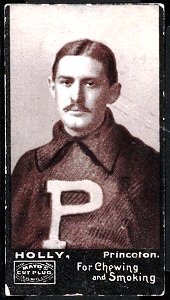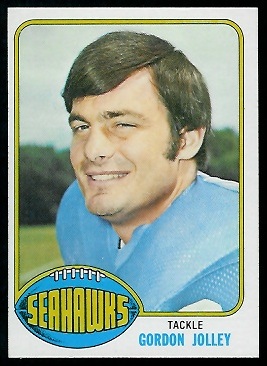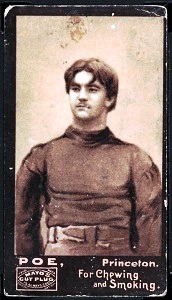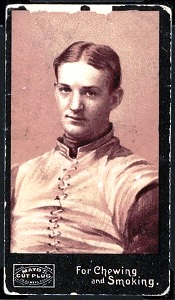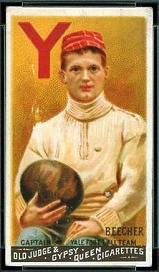 American football began in the colleges, and the first football cards were of college players. The very first football card, the 1888 Goodwin Champions tobacco card shown here, pictures Henry Beecher, captain of the Yale football team. The scan of the Beecher card is from a recent Huggins & Scott auction; a big thanks to them for letting me use it.
American football began in the colleges, and the first football cards were of college players. The very first football card, the 1888 Goodwin Champions tobacco card shown here, pictures Henry Beecher, captain of the Yale football team. The scan of the Beecher card is from a recent Huggins & Scott auction; a big thanks to them for letting me use it.
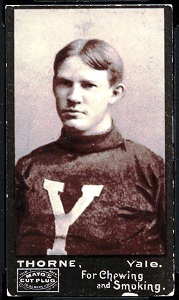 There are fifty cards in the 1888 Goodwin Champions set, ranging from jockeys to oarsmen to chess players, and Beecher is the only football player. The 1888 N162 Goodwin Champions page on obaks.com shows the composition of the full set. According to Wikipedia, the 1888 Champions set was “the first Goodwin set to use colored chromolithography.” As I understand it, this allowed mass production of the colored cards. It also made Henry Beecher appear to be wearing lipstick.
There are fifty cards in the 1888 Goodwin Champions set, ranging from jockeys to oarsmen to chess players, and Beecher is the only football player. The 1888 N162 Goodwin Champions page on obaks.com shows the composition of the full set. According to Wikipedia, the 1888 Champions set was “the first Goodwin set to use colored chromolithography.” As I understand it, this allowed mass production of the colored cards. It also made Henry Beecher appear to be wearing lipstick.
Six years after Beecher’s card, the first football-only set of trading cards was introduced, and it also featured Yale players. The 35-card 1894 Mayo Cut Plugs set contains players from the Big Three football schools of the time: Yale, Princeton, and Harvard. One of the cards, Brinck Thorne, is pictured here. See M is for Mayo Cut Plug for details on the Mayos.
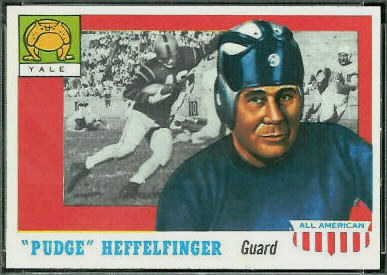
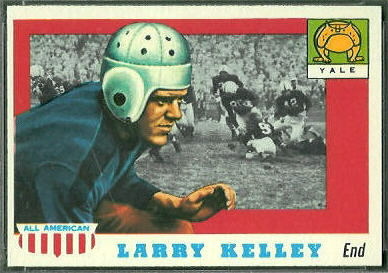 Yale also produced the first professional football player, Pudge Heffelfinger, who was paid $500 for playing a game in 1892. (According to the Inflation Calculator, that’s $11787 in 2009 dollars.) And Yale produced two of the first three Heisman trophy winners, Larry Kelley in 1936 and Clint Frank in 1937. Heffelfinger and Kelley both appear on 1955 Topps All-American cards, pictured here.
Yale also produced the first professional football player, Pudge Heffelfinger, who was paid $500 for playing a game in 1892. (According to the Inflation Calculator, that’s $11787 in 2009 dollars.) And Yale produced two of the first three Heisman trophy winners, Larry Kelley in 1936 and Clint Frank in 1937. Heffelfinger and Kelley both appear on 1955 Topps All-American cards, pictured here.
After 1937, Yale began losing more games than it won, and only a handful of Yale alumni from after that season have appeared on football cards. There are (five Yale alumni in the 1955 Topps All-American set, but none of them played there after 1937.) One notable alumnus was Brian Dowling, who was the inspiration for B.D. in Doonesbury. You can read about Dowling in an earlier blog article.
For much more on Yale football, see the Harvard-Yale Football Gallery.
